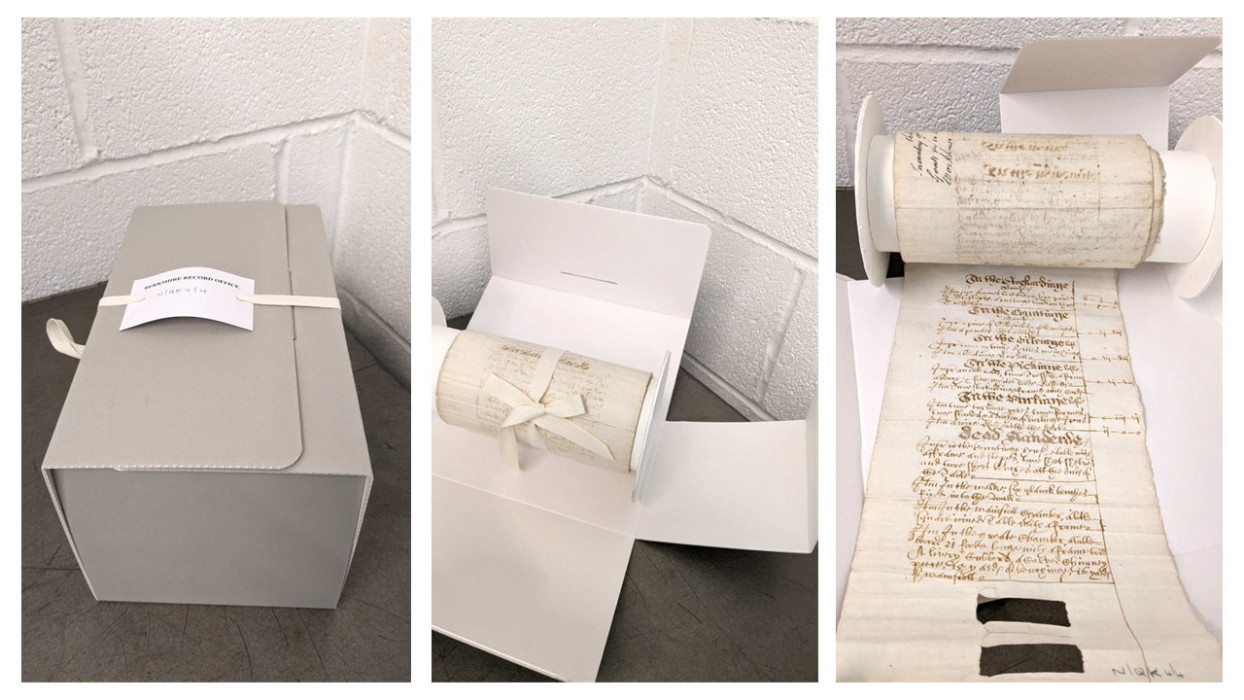Our Conservation team is constantly at work in the studio on the first floor of the Archives, helping to make damaged documents usable for visitors and preserve them for the future. Here we shine a spotlight on what they did with two important 17th century documents relating to a charity workhouse in Newbury.
The charity - a background
The charity was founded by the will of John Kendrick, a wealthy clothmaker who died in 1624. He left many bequests which included the foundation that eventually became Kendrick Girls’ School in Reading. Kendrick also left what was then an enormous sum of money - £4000 - in trust to the Corporation (or Borough) of Newbury for various charitable purposes, including to establish a workhouse, to provide loans to struggling tradesmen, and to pay for a daily prayer service at 6 am at St Nicolas's Church, Newbury.
In 1626 the Corporation bought a property called The Castle or The Hospital in Newbury for £350, and the workhouse Kendrick had wanted was erected on this site. The unemployed poor were set to work there making cloth in return for financial assistance and housing. This is something they also did at The Oracle, a similar workhouse established by Kendrick’s will in Reading. The activities of the workhouse are described in the accounts, 1628-1633, which can be consulted at the Royal Berkshire Archives (ref. D/EPT/Q3/1). You can also read about them in the Berkshire Record Society publication Newbury Kendrick Workhouse Records 1627-1641, edited by Christine Jackson (Berkshire Record Society, Volume 8, 2004). If you would like to purchase your own copy of this or other volumes, the Berkshire Record Society is running a limited time special offer so get one while you can.
The workhouse had ceased to be used by 1706, when it was decided to use the rents of the property to finance the Corporation’s Blue Coat School. Kendrick's Loan Charity consisted of a bequest of £500 which was to be lent out in sums of £50 to poor tradesmen, preference being given to clothiers. Kendrick's Morning Prayer Charity received £250 to buy land to pay for the daily service and this was spent on a messuage and 24s. on Wash Common.
The documents and repair
Relatively recently two hitherto unknown documents were discovered shedding new light on the workhouse (ref. N/QK4/3-4).
N/QK4/3 consists of the official articles of agreement between the mayor, aldermen and burgesses of Newbury (acting as trustees of the charity) and William Godwyn, clothier, for the use and management of Kendrick's Workhouse in 1636. Godwyn’s role was to manage the building and set the inhabitants to work making cloth, and also to manage the endowment trust fund of £500. He paid the trustees an annual rent of £30 but could keep the profits of the enterprise. He undertook to accept the poor of Newbury into the workhouse in preference to those from other places; and to keep the clothworking tools in good order, replacing them as needed. Godwyn was appointed because his predecessor, Richard Deerow, had 'much fayled performance of the trust in him so reposed' and was sacked. An inventory of the contents of the house is appended, providing an invaluable insight into cloth manufacture at that time.
A few years after this agreement, the Civil War disrupted life and industry locally. The second document, N/QK4/4, is an inventory of the contents of the workhouse in 1647, when the worst of the war was over.
The archivist cataloguing the two documents observed that both were damaged as a result of the iron gall ink with which they were written having corroded and destroyed the paper. The archivist flagged them up to the Conservation team in need of repair.
Conservation Treatment:
Both of the 17th century paper documents have similar issues in terms of their condition. They are brittle and fragile in the areas where iron gall ink has made the paper vulnerable to additional damage. They both have missing areas where the iron gall ink has essentially “eaten” through the paper.
Iron gall ink is acidic due to the ingredients (mainly oak gall nuts which contain tannin) used to make it. The combination of the acidic ink and the environmental conditions under which these documents were stored caused them to deteriorate over time.
The aim of conservation is to make the documents stable, chemically and physically, so they can be used for many more years.
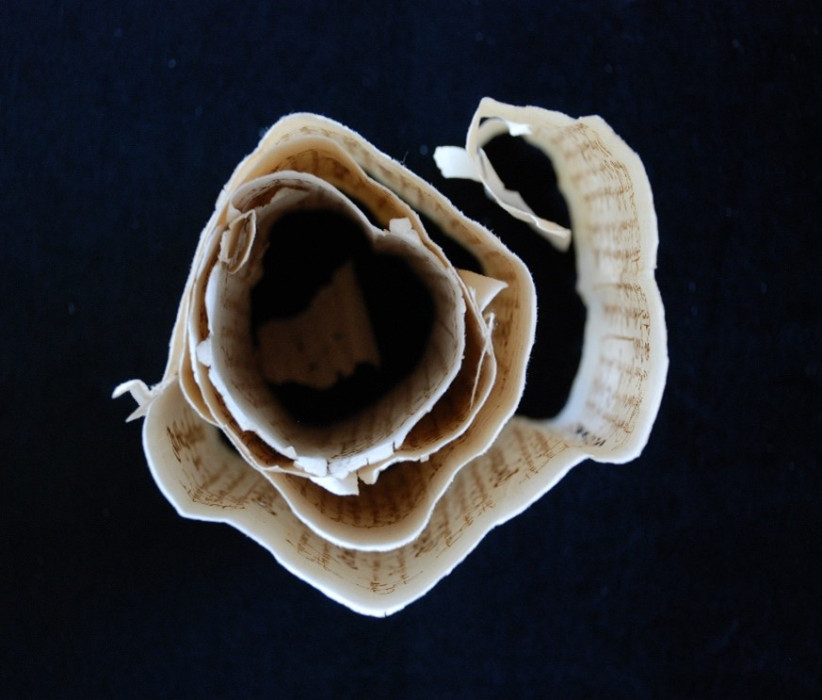
Specifically looking at the rolled inventory document, N/QK4/4, it is made up of 3 sheets of handmade French laid paper which has been sewn together. Most of the damage is restricted to the top part of the first sheet where one of the “teeth” is missing. The rest of the document has tears, and is torn in places however, aside from the damage from the iron gall ink it has aged relatively well.
The iron gall ink on all three sheets has corroded through the paper, leaving many areas of loss, and localized areas of brittleness, and weakness.
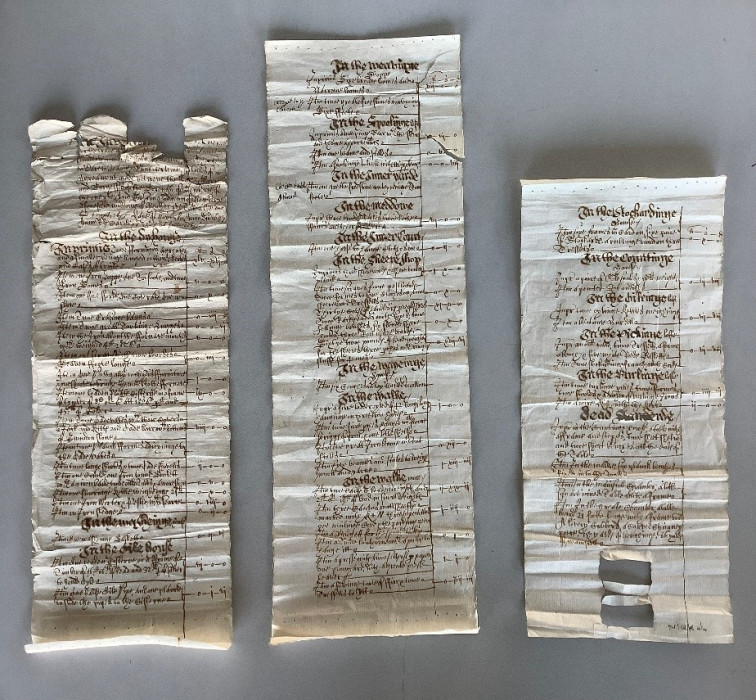
To avoid damaging the document, the sewing was removed, and the document was separated to make it easier to handle during treatment.
Prior to treatment, the document is tested to make sure it is safe to undergo the various conservation techniques required to make it stable.
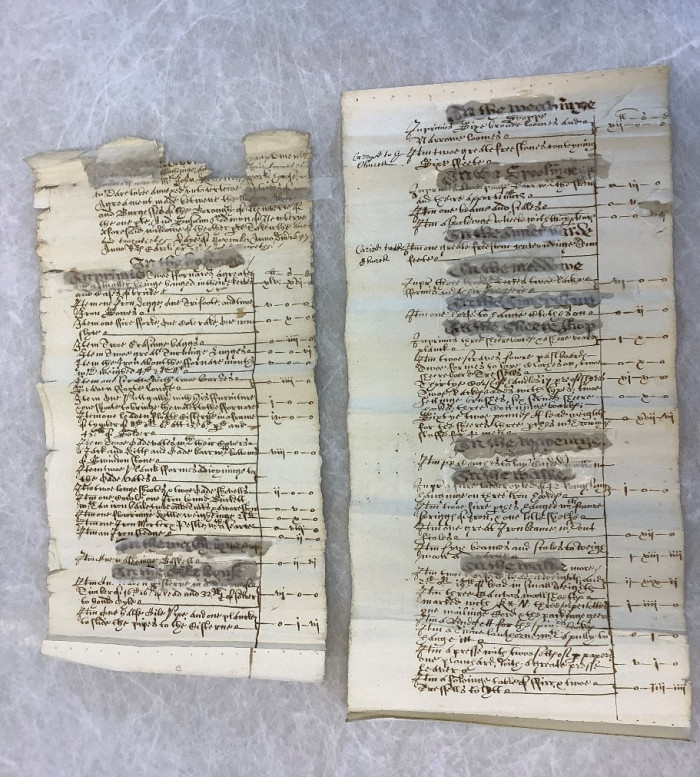
After cleaning the surface with a large soft brush and grated eraser, a fixative is applied to the surface of the corroded areas to protect and “hold” the flaking ink and torn paper in place so that it can be immersed in water for further cleaning.
The document is placed in a tray for washing. We're sure you wouldn't, but please do not try this at home in your bath!!
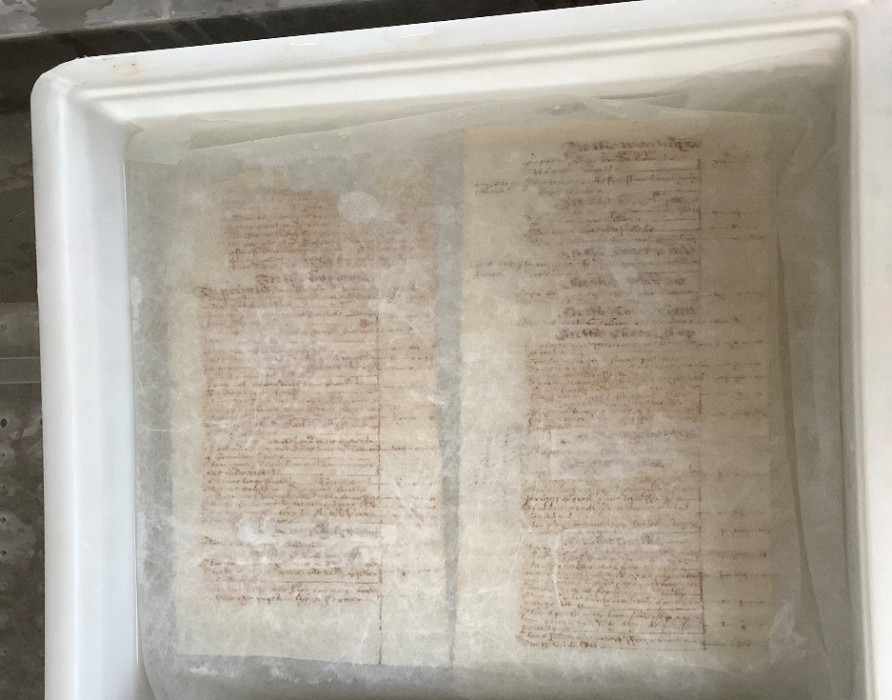
Immersing the documents in water, and “washing” them removes acidic and other harmful materials within the paper. It also helps to reduce discolouration and stains.
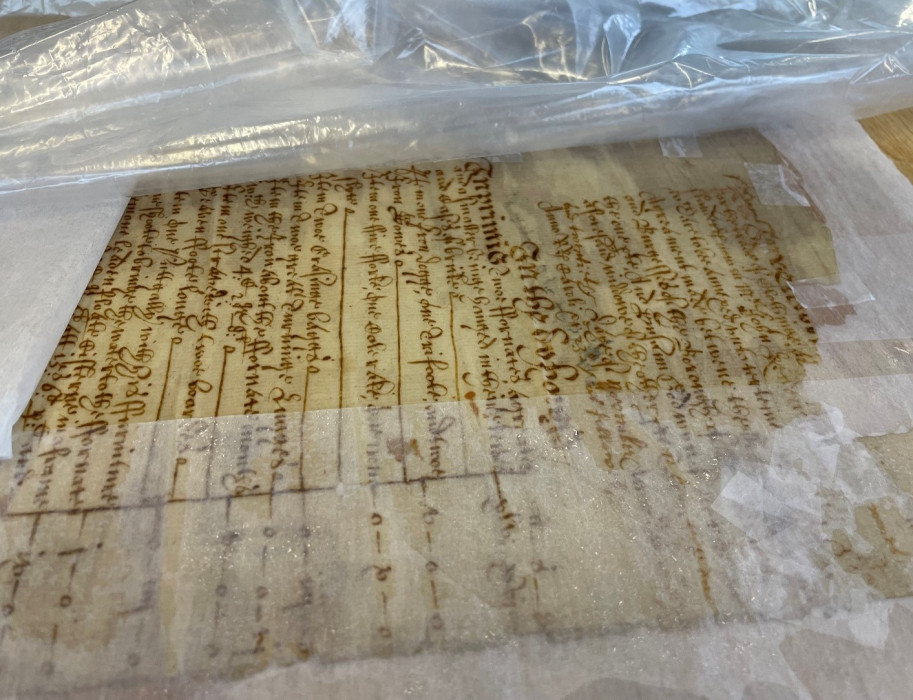
A custom-made compatible paper is made in the studio to fill in the missing “tooth” and surrounding area.
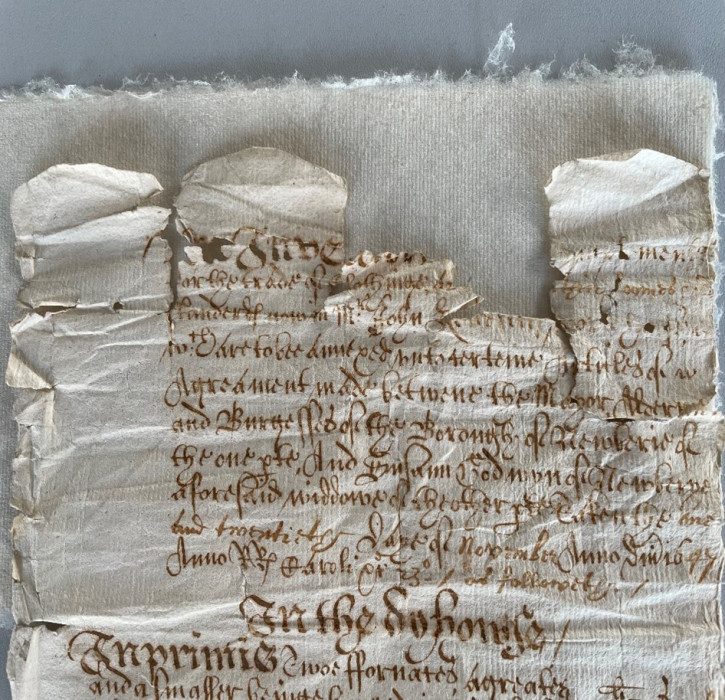
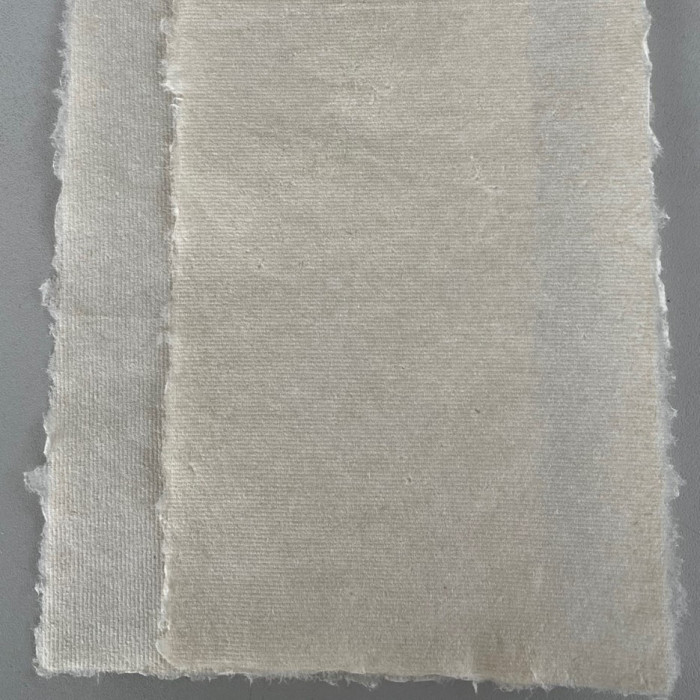
Of course, you won’t be surprised to discover that the secret to making paper….…is to use other bits of paper.
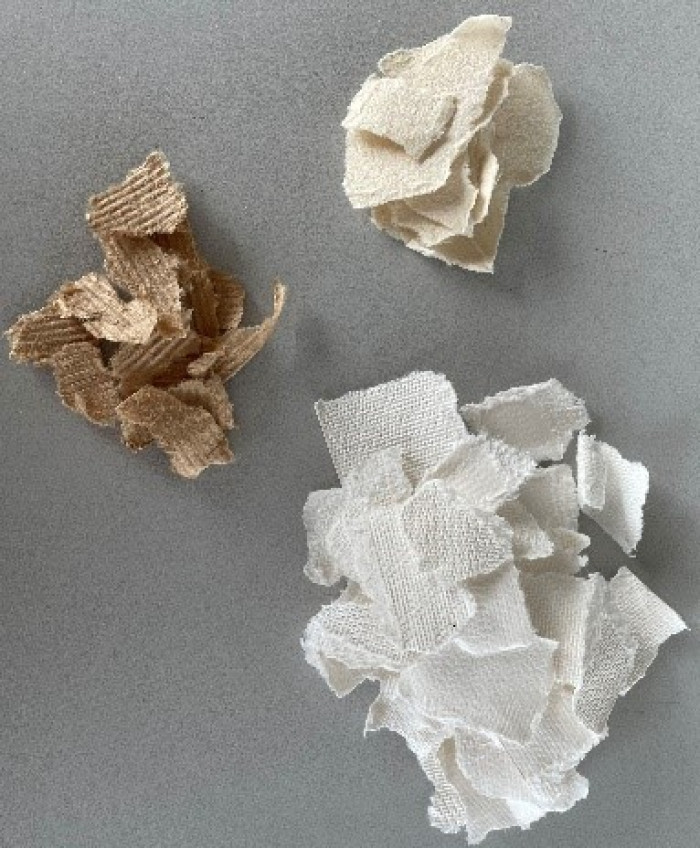
After - the finished articles
After Treatment: Front
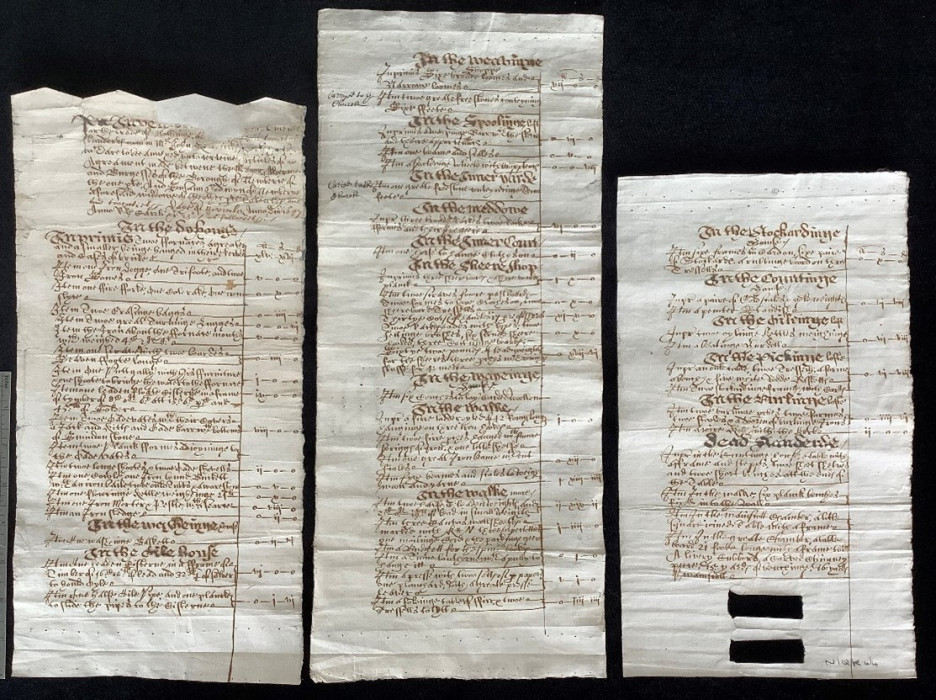
After Treatment: Back
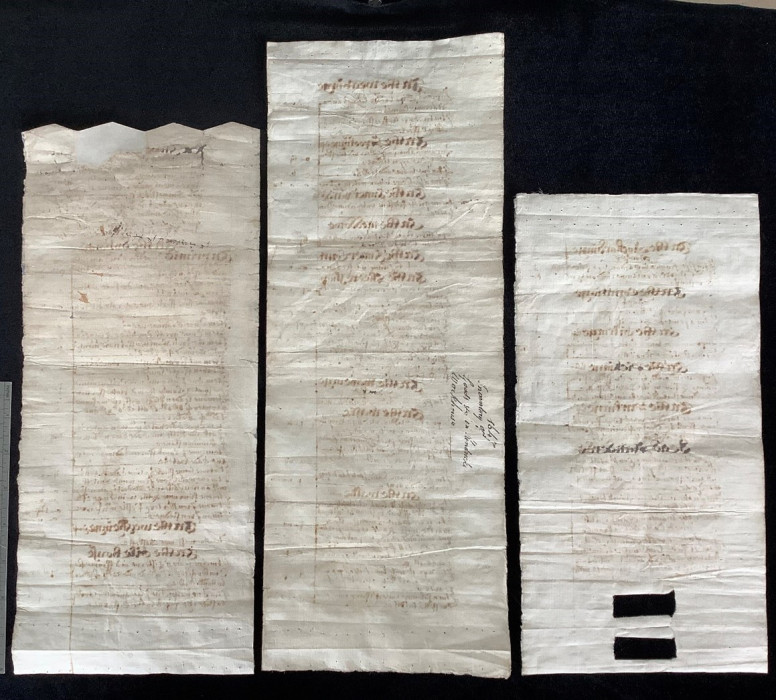
After treatment, the 3 sheets are sewn back together to form one document. Which is rolled around a custom-made tube for support, and housed in a custom-made box.
